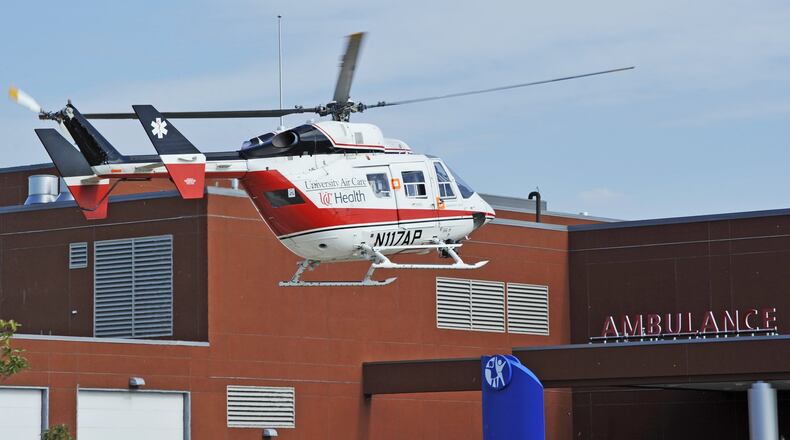Fire Chief Rick Prinz said the Center for Medicare and Medicaid approves rate increases each year, usually in the one to five percent range, but municipalities don’t always raise rates. He said his department considers its pricing each year, calculating the cost of disposables like IVs and medications.
RELATED: ‘Do I choose between food or the ambulance?’ Communities address concerns about transport bills
“We don’t necessarily want to raise the rate just to raise the rate,” Prinz said. “We want to make sure that it’s going to be a wise decision to offset some of those costs.”
Last year, for example, the cost for medications shot up 22 percent for the township. Patients have long been charged for EMS service, but prior to a 2003 law change, hospitals were doing the billing because they provided fire departments with equipment, medications and supplies. Prinz has said the existing budget and tax levy cannot shoulder the cost burden alone without compensation for the emergency runs.
The newly approved rates in the township are $482 for basic life support (BLS) and $965 for two categories — there are different levels of paramedic intervention procedures — of advanced life support. There is a $12.07 mileage charge to the hospital.
“West Chester really tries to be respectful of the fact our residents pay a levy for police and fire and EMS services,” said Township spokeswoman Barb Wilson. “So they should derive a benefit from that. We try to keep our costs as low as is responsible, to balance that with increasing costs.”
Rates charged for emergency transport vary widely countywide, and the majority of the jurisdictions haven’t made decisions yet on possible rate hikes. In Middletown, Fire Chief Paul Lolli said rates are tied by city ordinance to what Medicare and Medicaid will reimburse. Their BLS rate is $575, lower-level ALS rate is $761 and most advanced care rate is $1,212. The city charges $14.50 for mileage.
Lolli said what the city collects is “nowhere close” to what it costs to provide the transport services, so officials are starting to look at ways to reduce the number of runs that are not “truly life threatening.”
“It’s just kind of in its infancy stages but we know we need to do something to reduce runs and get rid of non-emergency runs,” Lolli said.
Fairfield Twp. Fire Chief Tim Thompson said in 2017 the township collected $475,000 in EMS charges but billed about $1.2 million in services. He said departments are at the mercy of Medicare, Medicaid and the insurance companies.
“If you bill $400 and Medicare approves $275, then you can only get paid up to $275. The whole system is really difficult for people to get a grip on,” Thompson said. “It’s not like we work at Joe’s garage and we tell you it’s $400 for your car, you’ve got to pay $400 or you don’t get it.”
Fire departments bill the patient’s insurance on every run. But if residents don’t have an ambulance service benefit in their plan, West Chester and several other communities — the city of Fairfield and Liberty, Hanover, Madison and Ross townships — covers the cost. For non-residents most if not all use “soft billing” or expunging of the bill balance after the billing vendor sends out three bills.
Hamilton, Middletown, Oxford and Fairfield Twp. charge residents for hospital transports.
Hamilton Fire Chief Mark Mercer said of the estimated 14,500 calls they made in the city last year, about 12,500 were for medical emergencies. Those billings brought in approximately $1.9 million last year to the $13 million department budget. He said the city won’t likely raise rates this year because they already charge higher than what Medicaid typically finds allowable.
Mercer said charging people for ambulance runs on top of taxes paid by residents is the fair thing to do.
“Not every service is paid completely by the user. If somebody pays taxes for streets but they never use Main Street, they live somewhere different, they don’t get a Main Street refund,” Mercer said. “On the other hand if there is a service we provide to specific customers we bill that out to get the people that are actually using the services in excess of the norm to take care of the costs on it.”
CONTINUING COVERAGE
The Journal-News is committed to helping you understand issues that affect your community and your wallet. After Medicaid approved a rate hike for emergency transports, the Journal-News contacted multiple local officials to provide context about what that means, why it’s important and what the deeper issues are.
About the Author
